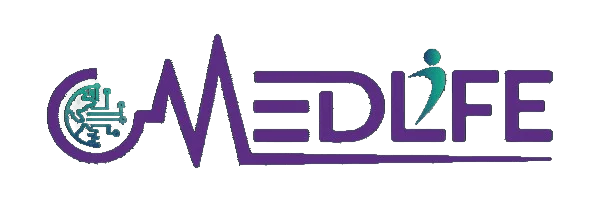In the world of business, especially in healthcare, effective financial management is essential to keep the doors open and the lights on. One of the most crucial aspects of this process is accounts receivable (AR) management. But what exactly is it, and why should it matter to your healthcare practice?
What Is Accounts Receivable?
Accounts receivable refers to the money that is owed to your business for services rendered or goods sold but not yet paid for. In simpler terms, it’s the money you expect to come in but hasn’t shown up yet. For medical practices, AR can significantly impact cash flow, which is essential for day-to-day operations. If AR management is not handled properly, it can lead to cash flow problems, delayed payments, and even financial instability.
Why Is AR Management So Important in Healthcare?
Managing AR in healthcare is more than just keeping track of unpaid invoices. The healthcare industry has a unique set of challenges, including dealing with insurance companies, patients, and third-party payers. Mismanagement of AR can lead to:
- Delayed cash flow
- Billing errors
- Financial instability
A solid AR management strategy helps your practice:
- Maintain consistent cash flow
- Reduce the number of days claims stay unpaid
- Minimize billing errors
- Improve your financial health
The Step-by-Step Process of AR Management
Effective AR management involves a series of steps. Here’s an overview of the process:
- Invoicing: After providing a service or delivering a product, an invoice is generated. For medical practices, this often means submitting claims to insurance companies or directly billing patients.
- Monitoring Payments: It’s crucial to track payments and ensure they come in on time. Any delays should be flagged and addressed right away.
- Follow-up: If payments aren’t made within the agreed-upon timeframe, follow-up is necessary. This may involve sending reminders or reaching out to insurance companies for updates.
- Collections: If payments remain unpaid despite multiple follow-ups, it may be time to escalate the matter to collections.
Each of these steps requires precision and prompt action to keep the AR process running smoothly and prevent bad debt from piling up.
How to Effectively Manage Your Accounts Receivable
Let’s dive into how you can manage AR effectively. In the healthcare industry, AR management can either make or break your practice’s financial stability. Here are some actionable steps you can take:
1. Establish Clear Payment Policies
One of the first things you should do is set clear payment policies. This means ensuring that your patients understand how much they owe and when payments are due. Be transparent about co-pays, deductibles, and any out-of-pocket costs. Clear communication up front can prevent confusion and delays down the road.
Having a defined process for follow-ups will also ensure that overdue payments are managed efficiently.
2. Automate the Billing Process
Automation is a game-changer when it comes to AR management. Consider investing in medical billing software that automates invoice generation, payment tracking, and reminders.
Not only does automation save time, but it also reduces human errors, which can lead to delays in payments. Automated updates on claim statuses can also help you quickly follow up on denied or delayed insurance claims, allowing for a faster recovery of funds.
3. Prioritize Aging Accounts
Not all accounts are created equal. Older accounts are typically harder to collect, so it’s important to prioritize them. By regularly reviewing an aging report (which shows how long invoices have been outstanding), you can identify which accounts need immediate attention.
Consider categorizing accounts based on how overdue they are (e.g., 30, 60, 90 days). This way, you can allocate your resources more effectively and take action as soon as possible.
4. Follow Up Consistently
Consistency is key to managing AR successfully. Once an invoice becomes overdue, you need to follow up right away. Whether you send email reminders, make phone calls, or use text messages, make sure your practice follows up regularly.
For example:
- Send an initial reminder after 30 days.
- Follow up more aggressively after 60 days.
- If payment isn’t received after 90 days, it may be time to consider collections.
The more consistent you are in your follow-ups, the better chance you have of getting paid on time.
5. Regularly Review AR Metrics
Tracking key AR metrics allows you to evaluate how well your AR management system is working. Some key metrics to monitor include:
- Days Sales Outstanding (DSO): This measures the average time it takes to collect payments. A lower DSO means your AR management system is more efficient.
- Percentage of Overdue Invoices: Monitoring overdue payments can help you spot trends and take action before things get out of hand.
- Bad Debt Write-Offs: Keeping track of how much AR you’ve had to write off as bad debt helps assess the overall effectiveness of your AR process.
Reviewing these metrics regularly will help you make data-driven decisions to improve your AR management.
The Role of Technology in AR Management
Technology has made AR management much more efficient. Medical billing software offers features like electronic claims submission, payment tracking, and automated reminders. These tools help streamline the process and reduce the chance of human error, which can lead to costly delays.
By adopting modern AR solutions, you can increase efficiency, reduce overhead costs, and keep cash flowing smoothly in your practice.
Improve Your AR, Improve Your Practice
Effective accounts receivable management is crucial to the financial health of any healthcare practice. By establishing clear payment policies, automating the billing process, prioritizing aging accounts, and following up consistently, you can significantly improve your AR management and overall cash flow.
Regularly reviewing AR metrics will also help you stay on top of outstanding payments and identify areas for improvement. Taking a proactive approach to AR management will help your practice maintain a stable financial position and allow you to focus on what truly matters – providing excellent patient care.
If you need help managing your AR, contact Medlife today to learn more about how our expert AR management services can support your practice’s financial health.


